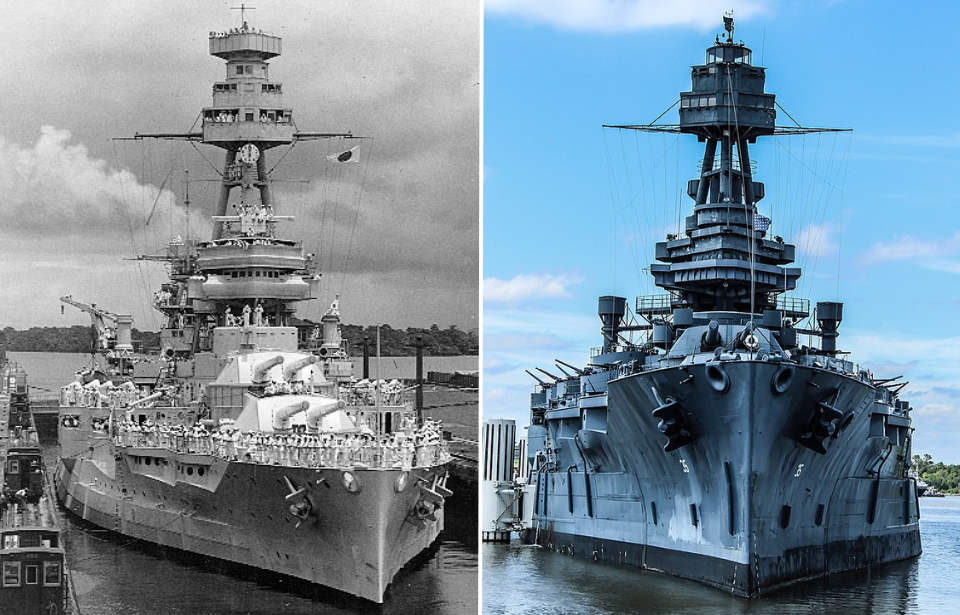It would be near impossible to list all of the ships that have served under the US Navy over the centuries – so we’re not going to do that. Instead, we’re going to highlight a select few that have caught our eye over the years, and we’re going to do something special. These vessels are still around today, albeit in varying forms of repair and disrepair (*cough* USS Oriskany *cough*), and we have decided to give you an interesting look at them via a classic “then and now” article!
USS Alabama (BB-60)
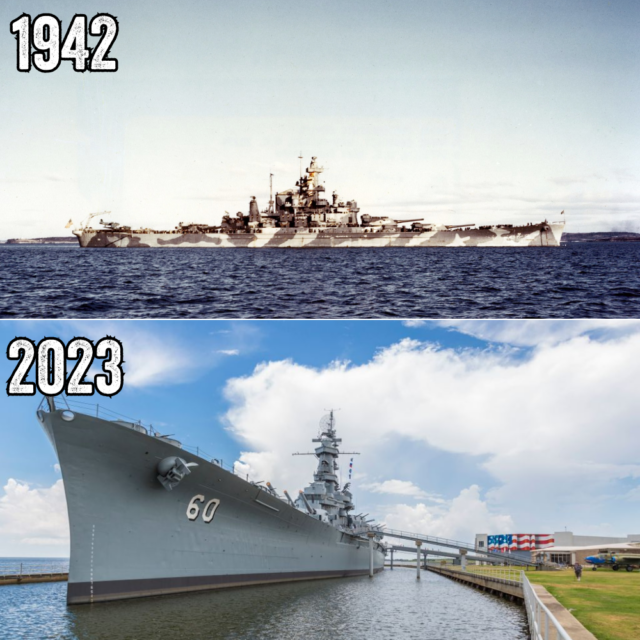
The final vessel in the South Dakota-class, the USS Alabama (BB-60) served throughout World War II, seeing much of her action in the Pacific. Participating in the likes of the Philippines and the Gilbert and Marshall Islands Campaigns, she largely took on the role of shore bombardments and carrier escort. The battleship was also involved in Operation Magic Carpet, bringing back troops to the United States.
Following the conclusion of the Second World War, in the mid-1940s, Alabama was decommissioned and sent to join the Pacific Reserve Fleet in Washington. While there were plans to modernize and even turn her into a guided-missile battleship, neither of these occurred and the vessel was, instead, turned into a museum ship.
Since becoming a museum ship, Alabama has been popular with both tourists and naval enthusiasts alike. The vessel has made appearances in several big-screen productions, such as USS Indianapolis: Men of Courage (2016) and Under Siege (1992), and even underwent a massive restoration effort in the early 2000s, thanks to fundraising by those in charge of the museum.
Those interested in visiting the USS Alabama can do at Battleship Memorial Park in Mobile, Alabama.
USS Silversides (SS-236)
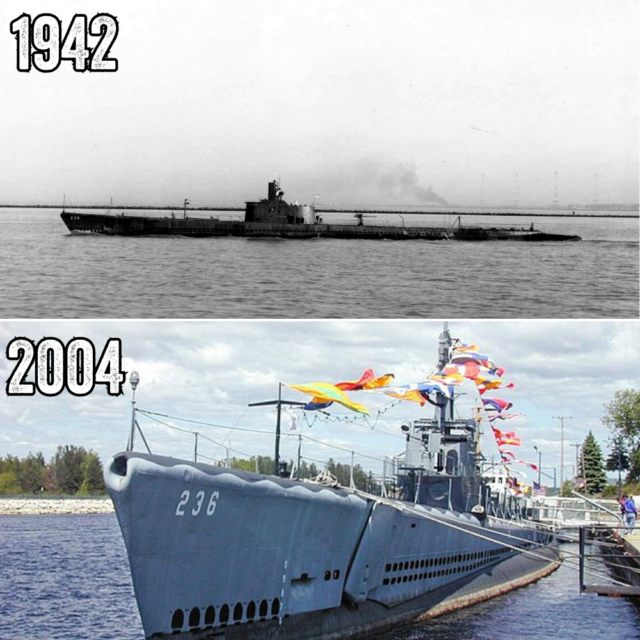
Considered one of the most successful submarines to have served in the Pacific during the Second World War, the USS Silversides (SS-236) has since become a museum ship. The American submarine entered the conflict in April 1942, and over the course of the fighting sunk over 91,444 tons of shipping – that’s equal to 23 sinkings!
Less than a year after the Japanese surrender, Silversides was decommissioned and sent to Chicago, where she acted as a training vessel for Naval Reservists. She served in this capacity for several decades, after which she was stricken from the Naval Vessel Register (NVR) and given over to the Combined Great Lakes Navy Association. The group has continued to care for the submarine and fundraise repairs.
Those interested in seeing the vessel can do so by visiting the USS Silversides Submarine Museum in Muskegon, Michigan.
USS Arizona (BB-39)
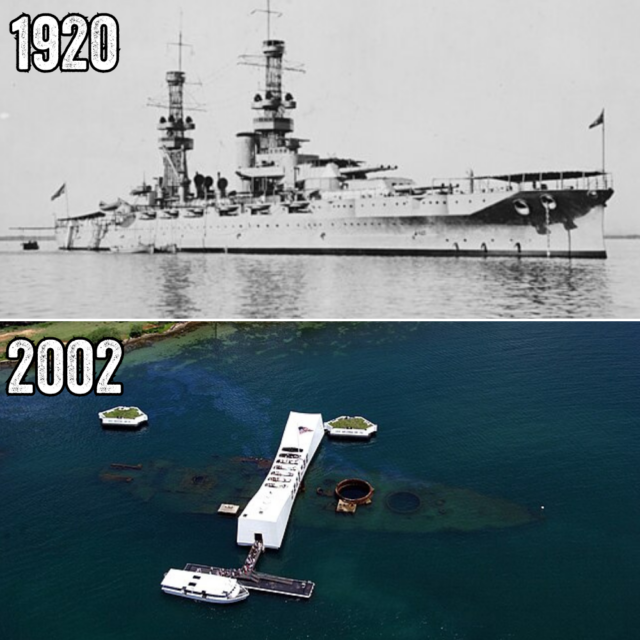
Arguably the most famous battleship in American history, the USS Arizona (BB-39) met a fiery end on December 7, 1941, when the Japanese attacked Pearl Harbor. The vessel was one of the nine moored at Battleship Row, and her end came around 8:00 AM, when an enemy aircraft dropped a 1,760-pound projectile that broke through the deck and ignited the stores of munitions and fuel below.
A devastating 1,177 died aboard Arizona that day, with over 900 remains being left in the battleship’s sunken wreck. The vessel was left sunken off the coast of Ford Island and, with the help of Elvis Presley, the USS Arizona Memorial was erected in 1962. Built over the ship, the memorial pays tribute to those who lost their lives in the attack.
The Arizona name has remained unused since the Second World War, with it only announced in 2022 that a submarine would receive the title, the USS Arizona (SSN-803). The Virginia-class vessel is currently under construction.
Those interested in paying their respects to the USS Arizona‘s fallen crewmen can do so by traveling to Pearl Harbor.
USS Oriskany (CV-34)
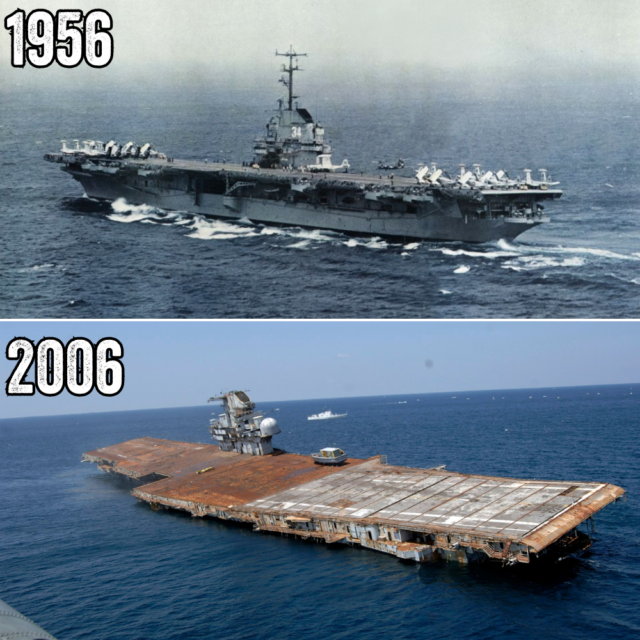
Despite being laid down during the Second World War, the USS Oriskany (CV-34) didn’t see action until the Korean War, during which the aircraft carrier’s bombers conducted several assaults on enemy positions. She served in a similar capacity when the US forces entered Vietnam, with her aircraft conducting more than 12,000 sorties and dropping around 10,000 tons of bombs while participating in the conflict.
Following her decommissioning in 1976, Oriskany was laid up in Washington. Similar to the USS Alabama, there were plans to reactivate the aircraft carrier, but these fell through following the conclusion of the Cold War – the vessel simply wasn’t needed anymore, given her outdated technology and design.
In 2004, the US Navy announced Oriskany would be purposely sunk off the coast of Florida and turned into an artificial reef. Two years later, she was towed into the Gulf of Mexico and sunk with C-4 explosive charges. Today, the aircraft carrier is considered to be one of the world’s best diving spots.
USS Missouri (BB-63)
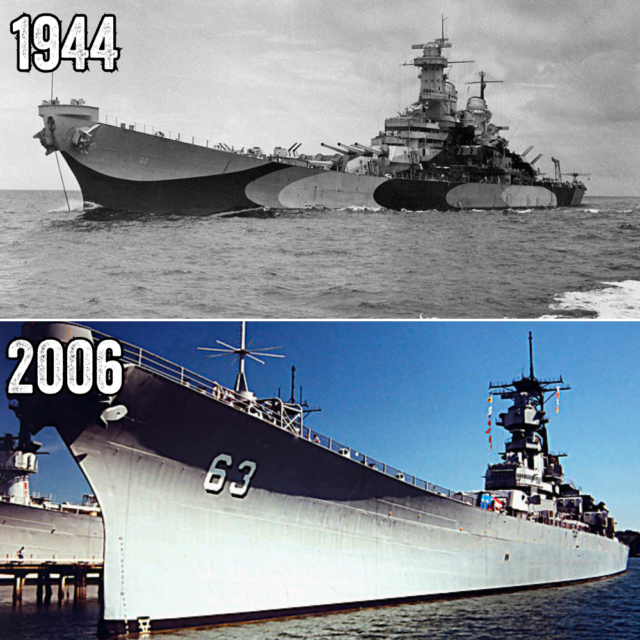
The last battleship commissioned by the United States, the Iowa-class USS Missouri (BB-63) made her mark fighting Japanese troops off the coasts of Iwo Jima and Okinawa. She’s also famous for being the place where the Instrument of Surrender was signed following the atomic bombings of Hiroshima and Nagasaki. The document officially put an end to the Second World War and ushered the world into a (short-lived) peacetime.
Seeing additional action in Korea, Missouri was decommissioned in 1955 and, until being returned to service in the mid-1980s, was a popular tourist spot, attracting upwards of 250,000 visitors a year. Her reactivation was part of Ronald Reagan‘s plan to build a 600-ship Navy, but before the battleship could see action, she first needed to be upgraded, with a key focal point being her guns.
Upon the outbreak of the Gulf War, Missouri was sent to the Middle East, seeing action as part of Operation Desert Storm. She also conducted naval patrols of the region. Similar to the USS Oriskany, she was decommissioned as as result of the collapse of the Soviet Union, and while initially sent to the Reserve Fleet was ultimately stricken from the Naval Vessel Register in 1995.
Today, the USS Missouri serves as a museum ship. Those interested in taking a peek at the storied battleship can do so by making a visit to Pearl Harbor, where she is maintained by the USS Missouri Memorial Association.
Prinz Eugen
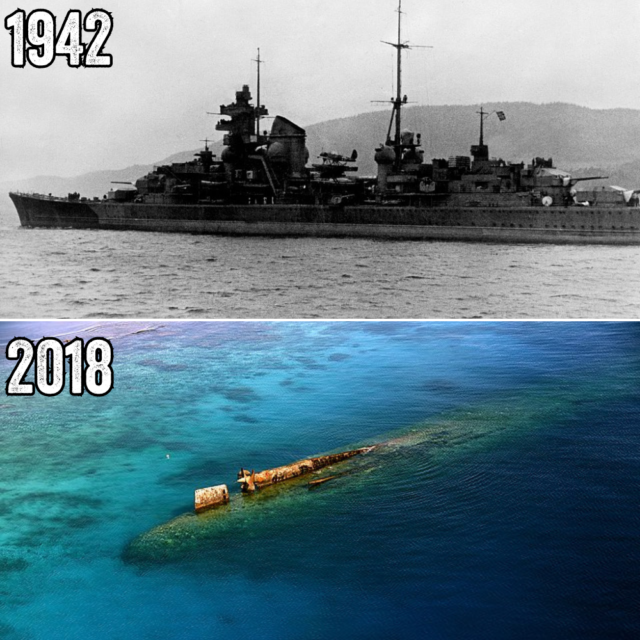
Operated by the Kriegsmarine during the Second World War, the heavy cruiser Prinz Eugen spent much of her wartime service targeting Allied vessels, with her most notable incident coming during Operation Rheinübung – in particular, the Battle of the Denmark Strait. Teaming up with famed battleship Bismarck, the duo damaged the British ships HMS Hood (51) and Prince of Wales (53).
When Germany surrendered to the Allies in May 1945, Prinz Eugen was among the equipment turned over to the United States as a war prize. The heavy cruiser was then chosen to take part in the nuclear tests that came to define Operation Crossroads, with the trials failing to sink her. She was, however, heavily damaged, with oil leaking from her – and this impairment is ultimately why the ship sank.
Today, Prinz Eugen‘s wreck can be seen poking out of the surface of the water near Kwajalein Atoll. The leaking oil has since been contained, meaning naval enthusiasts can safely dive at the site.
USS Torsk (SS-423)
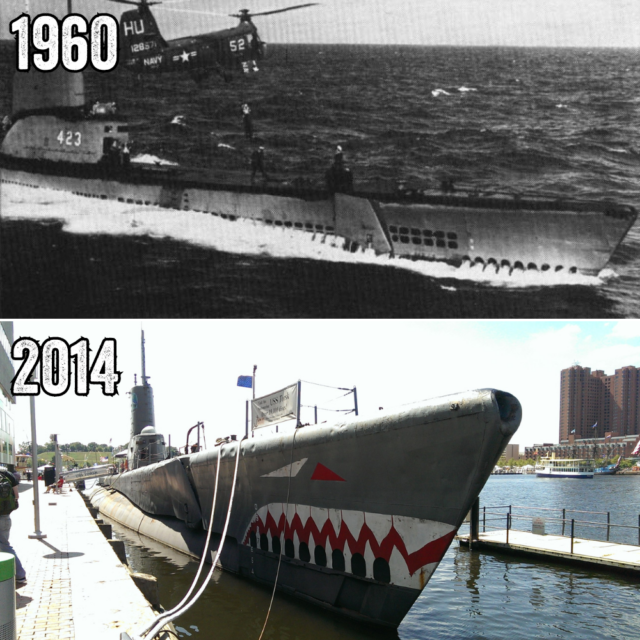
One of the lesser-known vessels on this list, the USS Torsk (SS-423) is a World War II-era submarine that conducted patrols of the Pacific. Her main contribution to the Allied efforts in the theater came in 1945, when she sank three Japanese vessels – two coastal defense frigates and one cargo ship.
Torsk remained in active service with the US Navy until 1968, with her spending the majority of her time performing patrols and participating in training exercises. Following her decommissioning, the submarine continued her training duties, being assigned to the Naval Reserve until 1971, when she was stricken from the Naval Vessel Register.
Designated a National Historic Landmark, Torsk was transferred to Baltimore, Maryland, where she’s served as a museum ship since the 1970s. Those interested in visiting the submarine can view her as part of the Historic Ships in Baltimore, alongside the likes of the USS Constitution, Chesapeake (LV-116) and the USCGC Taney (WHEC-37).
USS Texas (BB-35)
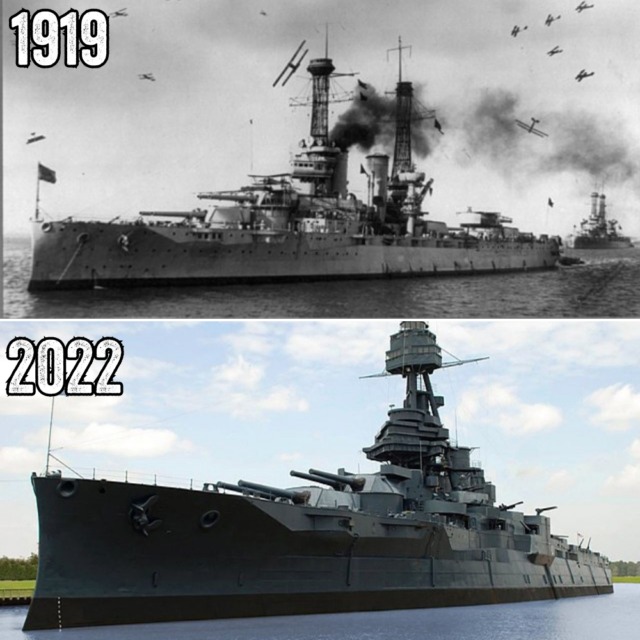
Arguably one of the most iconic vessels to ever be operated by the US Navy, the USS Texas (BB-35) has a history that spans over a century. The last surviving dreadnought battleship, Texas first saw action during the Tampico Incident in April 1914, and went on to serve in the First World War, firing the first American shots of the conflict.
Fast forward to World War II, when Texas made a splash – literally – during the Normandy landings in 1944. As the Allies made their way inland into France, the battleship’s crew made the difficult decision to purposely flood the vessel, to ensure she could remain in the fight for as long as possible; the angle she assumed meant her guns could fire further inland, hitting targets that would have otherwise been unreachable from her position off the coast.
Decommissioned in 1948, Texas was delivered to the San Jacinto Battleground Historic Site, where she was transformed into a museum ship. In recent years, the battleship has been away from her home in Texas for some much-needed restoration. Work is expected to continue until 2025, when she’ll reopen to the public.
USS Inaugural (AM-242)
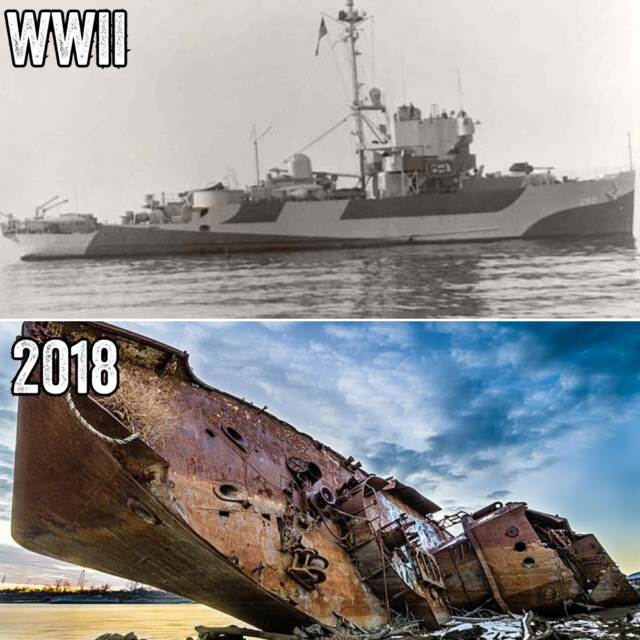
An Admirable-class fleet minesweeper, the USS Inaugural (AM-242) served in the latter stages of the Second World War, being commissioned in 1944. She primarily operated off the coasts of Korea and Japan, protecting Allied ships from hidden sea mines beneath the water’s surface.
Following her service in the conflict, which saw her clear 82 enemy mines, Inaugural was decommissioned and sent to St. Louis, Missouri to be turned into a museum ship. She was a public attraction until August 1993, when she broke free of her moorings. The incident caused damage to the minesweeper’s hull, and she became wrecked along the banks of the Missouri River, where she remains to this day.
Those wishing to visit the wreck of the USS Inaugural should plan to make their trip when water levels are below average, as this provides the best viewing opportunities.
USS Kidd (DD-661)
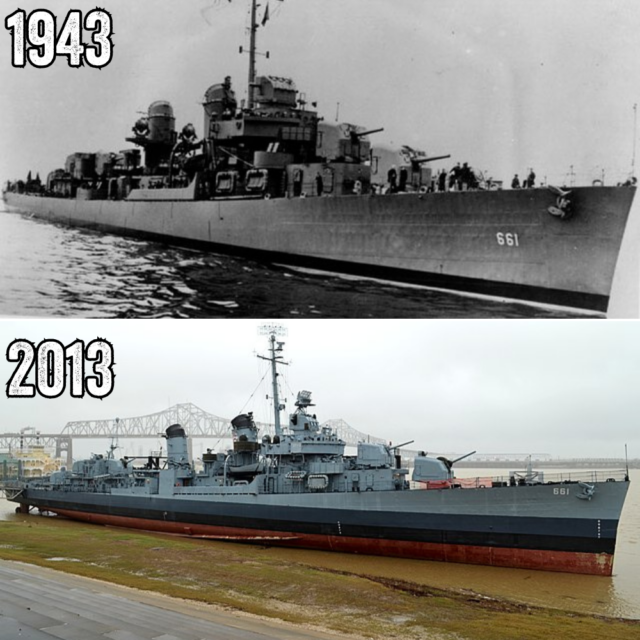
Not to be confused with the Arleigh Burke-class destroyer, the USS Kidd (DD-661) was a Fletcher-class vessel that served in the Second World War and in Korea. Participating in several strikes during the former conflict, her most notable actions came with the Battle of Okinawa, when she and the other members of Task Force 58 (TF 58) – the USS Bullard (DD-660), Black (DD-666) and Chauncey (DD-667) – repelled three air raids by the Japanese.
While placed into the US Navy’s Reserve Fleet after the war, Kidd was recommissioned upon the outbreak of fighting in Korea, conducting patrols and bombardments during the conflict. She remained in active service during the first half of the Cold War, largely performing patrols along the West Coast. Her crew was on the lookout for Soviet submarines in American waters.
More from us: The USS New York (LPD-21) Was Constructed With Steel From the World Trade Center
Following her second decommissioning in 1964, Kidd was transformed into a museum ship, with her permanent home becoming Baton Rouge, Louisiana. She’s under the purview of the Louisiana Naval Memorial Commission and is open for public visits.
